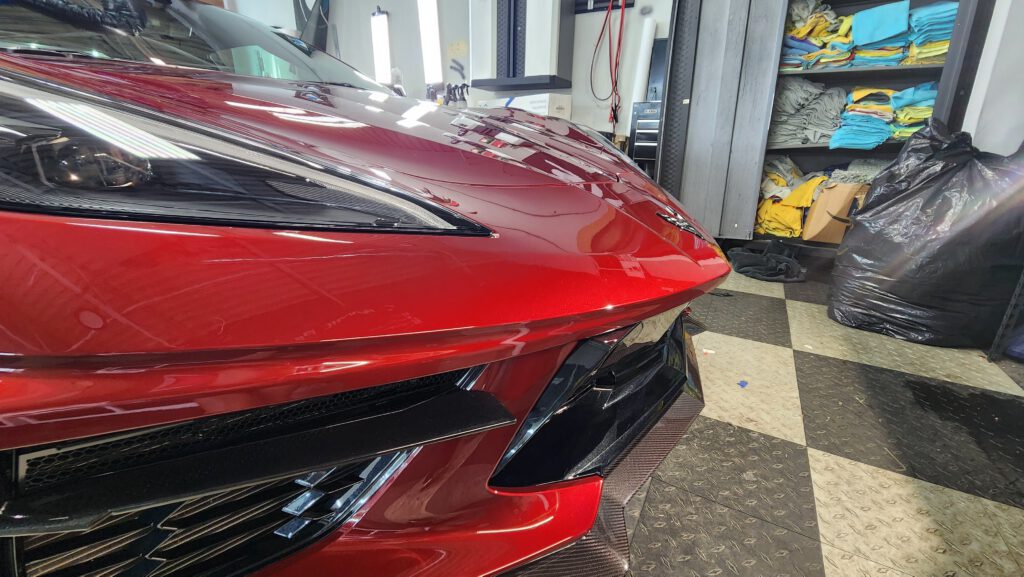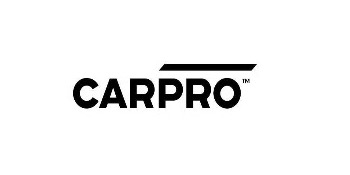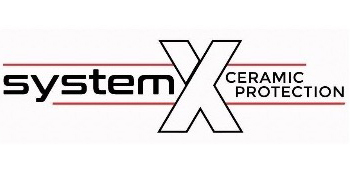
Have you ever wondered how long paint protection film truly lasts?
The lifespan of this automotive shield has been a topic of much debate, with various factors influencing its durability.
Understanding the intricacies of paint protection film longevity can be vital for maintaining the pristine appearance of your vehicle.
As you explore the complexities surrounding the lifespan of PPF, you may uncover essential insights with LI Car Guy that could impact your decision-making process regarding vehicle protection.
Key Takeaways
- Proper application and maintenance significantly impact the lifespan of paint protection film.
- Quality materials and professional installation are crucial for extending the durability of PPF.
- Environmental factors like UV exposure and pollution can affect the longevity of PPF.
- Following manufacturer guidelines for cleaning, maintenance, and upkeep is essential for preserving PPF integrity.
Factors Affecting Paint Protection Film Longevity
To maximize the longevity of your paint protection film, understanding the key factors influencing its durability is essential. Proper PPF application tips play a vital role in determining how long your paint protection film will last. The meticulous application of the film guarantees that it adheres seamlessly to your vehicle’s surface, minimizing the risk of premature peeling or bubbling that can compromise its effectiveness. Additionally, choosing high-quality PPF and having it professionally installed, such as by opting for paint protection film Long Island, can greatly extend its lifespan.
When debunking PPF longevity myths, one common misconception is that paint protection film is indestructible. While PPF is highly durable and can withstand a great deal of wear and tear, it isn’t impervious to damage. Harsh environmental conditions, improper maintenance, and accidents can all impact the lifespan of your paint protection film. Regular upkeep, such as washing your vehicle with a gentle touch and avoiding abrasive cleaners, can help preserve the integrity of the film over time.
In addition, understanding the longevity factors of paint protection film involves recognizing that proper care and maintenance are essential. Following manufacturer recommendations for cleaning and maintenance, avoiding exposure to harsh chemicals or extreme temperatures, and addressing any damage promptly can all contribute to prolonging the life of your PPF. Incorporating these tips into your maintenance routine ensures that your paint protection film remains effective and looks its best for years.
Proper Installation Techniques for PPF
Properly installing the best paint protection film requires precise techniques to guarantee a seamless and long-lasting application. The key to a successful PPF installation lies in the meticulous preparation of the surface. Before applying the film, make sure that the vehicle’s paint is free of any contaminants such as dirt, wax, or grease. Thoroughly clean and dry the surface to create an ideal bonding environment for the film.
When it comes to the actual application process, proper technique is essential. Start by carefully measuring and cutting the film to fit the specific contours of the vehicle. A precise cut ensures that the film covers the painted surface effectively, providing maximum protection. During installation, use a squeegee to smooth out any air bubbles or wrinkles that may form beneath the film. This step is important for achieving a flawless finish and preventing premature peeling or lifting of the film.
Additionally, paying attention to the temperature and humidity conditions during installation can impact the longevity of the PPF. Ideally, work in a controlled environment with moderate temperatures to allow the film to adhere properly. Properly installed paint protection film not only enhances the appearance of your vehicle but also safeguards its paint from chips, swirl marks, and other environmental damage, ensuring long-lasting protection for years to come.
Understanding PPF Maintenance Best Practices
When maintaining your paint protection film (PPF), it’s important to clean it effectively to remove contaminants that can compromise its protective properties. Proper cleaning methods preserve the PPF’s shine and extend its longevity, keeping your vehicle looking pristine for longer periods.
Cleaning PPF Effectively
Using gentle cleaning products and techniques is essential for maintaining the best cleanliness of paint protection film (PPF).
When tackling stain removal on PPF, start by washing the surface with a mild automotive detergent and water. For stubborn stains, a mixture of isopropyl alcohol and water can be effective.
Always use a soft microfiber cloth or sponge to avoid scratching the film. To enhance surface protection, consider applying a dedicated PPF sealant or detailing spray.
These products can help repel dirt, grime, and environmental contaminants, extending the life of your PPF. Remember to avoid abrasive cleaners or rough scrubbing, as they can damage the film and compromise its longevity.
Preserving PPF Shine
To maintain the shine of your paint protection film (PPF), incorporating a regular care routine is essential for preserving its appearance and protective properties. Gloss retention is crucial in making sure your PPF continues to enhance your vehicle’s aesthetics.
To achieve the best shine preservation, consider these tips:
First, wash the PPF regularly using a mild automotive detergent and a soft microfiber cloth to prevent dirt buildup that can dull the gloss.
Next, avoid using abrasive cleaners or harsh chemicals that can damage the film’s shine.
Finally, a quality PPF sealant or spray wax should be applied every few months to enhance gloss retention and provide an additional layer of protection.
Impact of Environmental Factors on PPF Lifespan
Environmental factors play a pivotal role in determining the longevity of paint protection film (PPF). Weather conditions, especially extreme temperatures and humidity levels, can greatly impact the performance of PPF. High temperatures can accelerate the degradation of the film’s adhesive properties, leading to premature peeling or yellowing. Conversely, freezing temperatures can make the film brittle and more prone to cracking upon impact.
In addition, UV exposure is a major environmental factor that can affect PPF lifespan. Continuous exposure to sunlight can cause the film to fade over time, losing its clarity and protective properties. UV radiation can also break down the molecular structure of the film, making it less effective in shielding the vehicle’s paint from environmental hazards.
In regions with high levels of air pollution, contaminants in the atmosphere can adhere to the PPF surface, compromising its protective capabilities and diminishing its aesthetic appeal. Regularly cleaning the film can help mitigate the effects of environmental pollutants and prolong its lifespan.
To maximize the longevity of your PPF in varying environmental conditions, consider parking your vehicle in shaded areas whenever possible, using a protective film with UV inhibitors, and following recommended maintenance practices. By being mindful of these environmental factors and taking proactive measures, you can make sure that your PPF continues to provide excellent protection for your vehicle’s paint finish.
Signs That Your PPF Needs Replacement
When evaluating the condition of your paint protection film (PPF), closely examine the film for any visible signs of wear or damage that indicate the need for replacement. Regular inspection is important to maintain the effectiveness of the film in safeguarding your vehicle’s paint. Here are some replacement indicators and insights to take into account:
- Visible Damage: Look out for scuffs, cracks, or discoloration on the PPF surface. These signs suggest that the film is no longer providing the best protection and should be replaced promptly.
- Edge Lift: If you notice any lifting or peeling at the edges of the film, it can allow dirt and moisture to accumulate underneath, potentially leading to damage to the underlying paint. Address edge lift issues promptly by replacing the affected sections.
- Yellowing: Over time, PPF may start to yellow due to exposure to sunlight and environmental factors. Yellowing not only affects the aesthetics but also indicates a decrease in the film’s protective capabilities. Consider replacement to maintain the overall look and protection of your vehicle.
- Loss of Adhesion: When the PPF starts to lose its adhesive properties, it can create air pockets or bubbles between the film and the paint. These areas are prone to trapping contaminants and can compromise the film’s protective function. Replacement is advisable to ensure continued protection.
Taking these replacement indicators into account and inspecting your PPF regularly will help you stay ahead of any potential issues. When replacement is necessary, factor in cost considerations and evaluate whether a DIY removal or professional assistance is the best option for your specific situation.
Can PPF Extend the Life of Your Vehicle’s Paint?
Applying paint protection film (PPF) can greatly enhance the longevity of your vehicle’s paint by acting as a shield against various environmental hazards.
The advantages of using PPF include safeguarding the paint from road debris, UV exposure, and harsh weather conditions, ultimately preserving its pristine condition for longer periods.
This protective film can have a substantial impact on the durability of your vehicle’s paint, ensuring a lasting and well-maintained appearance.
PPF Benefits for Longevity
To enhance the longevity of your vehicle’s paint, paint protection film (PPF) offers a reliable solution that acts as a shield against various external elements. PPF durability is a key factor that contributes to the extended life of your vehicle’s paint.
Here are four benefits of PPF for enhancing longevity:
- Protection from UV Rays: PPF helps prevent UV rays from fading and degrading your vehicle’s paint over time.
- Chemical Resistance: PPF protects your paint from harsh chemicals, such as bird droppings or tree sap, which can damage the finish.
- Impact Absorption: PPF can absorb impacts from small stones or road debris, preventing chips and dings that can affect the paint.
Paint Protection Film Advantages
Paint protection film (PPF) offers a range of advantages that can greatly prolong the life of your vehicle’s paint, making it a practical investment for long-term protection. When considering cost-effectiveness, PPF can save you money in the long run by preventing damage from road debris, UV rays, and environmental contaminants that would otherwise require costly repairs or repainting.
Its durability guarantees that your vehicle’s paint remains in top condition for years, maintaining its value and appearance. Additionally, the versatility of PPF allows it to be applied seamlessly to various parts of the car, offering complete protection.
Impact on Paint Durability
Enhancing the durability of your vehicle’s paint, paint protection film (PPF) acts as a robust shield against various environmental factors, greatly extending the lifespan of your car’s exterior. Here’s how PPF impacts paint durability:
- UV Protection: PPF blocks harmful UV rays that can cause paint to fade and deteriorate over time.
- Enhanced Paint Longevity: By shielding the paint from road debris, bird droppings, and other contaminants, PPF helps maintain the pristine condition of your vehicle’s exterior.
- Increased Paint Durability: With PPF, your car’s paint is less susceptible to chipping, peeling, and other forms of damage, ensuring a longer-lasting finish.
Wrap-Up
You’ve learned about the key factors affecting the lifespan of paint protection film, from proper installation techniques to maintenance best practices.
Like a suit of armor for your vehicle, PPF shields your paint from environmental threats.
Keep an eye out for signs that your PPF needs replacement, and remember that PPF can help extend the life of your vehicle’s paint.
With proper care and maintenance, your PPF can provide lasting protection for years.






